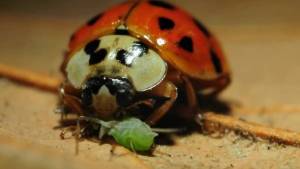Table of Contents
Group 5
Reproductive interference between competing species
Wiki site of the practical exercise of the VI Southern-Summer School on Mathematical Biology.
Here you will find the exercise assignment and the group's products.
If you are a group member login to edit this page, create new pages from it, and upload files.
Introduction
Reproductive interference may be defined as any kind of sexual interaction between individuals from different species that reduces the fitness of at least one of them. Even though it is relatively common, reproductive interference is usually ignored as an ecological process than can influence species' coexistence and exclusion.
 Fig. 1. Reproductive interference may take many forms. Figure stolen from this place.
Fig. 1. Reproductive interference may take many forms. Figure stolen from this place.
Reproductive interference can occur for many reasons, one of which is failure to discriminate conspecifics from heterospecifics. This sort of failure is more common among closely related species, which also commonly compete for resources. Such is the case with the ladybug sister species Harmonia yedoensis and Harmonia axyridis. These species compete and also interfere reproductively with each other. The interference is asymmetrical, so that H. yedoensis suffers more fitness loss from it than its sister species. In addition, H. axyridis grows faster and is more effective at hunting most aphid species. H. yedoensis, however, is specialized in a highly elusive pine tree aphid species.
 Fig. 2. A hungry Harmonia yedoensis. Or is it a Harmonia axyridis?
Fig. 2. A hungry Harmonia yedoensis. Or is it a Harmonia axyridis?
It has been hypothesized that H. yedoensis is not competitively excluded by its sister species exactly because it is specialized in a “difficult” prey, and also because individuals can find refuge in the pine trees. More information can be found in Noriyuki et al. 2012 (link available below).
Assignment
Given all this amazing pieces of information about this incredible pair of species, develop a mathematical model that reproduces the main characteristics of the interaction between H. yedonensis and H. axyridis: competition for prey, reproductive interference, prey specialization by one of the species.
Questions & Suggestions
- Can you show, using your model, the importance of having a refuge (the pine trees) for the persistence of H. yedonensis populations? (Notice that the model need not be spatially explicit).
- In their discussion, Noriyuki et al. suggest that the direction of reproductive interference can determine the evolution of ecological specialization. In light of your model results, does this suggestion make sense?
